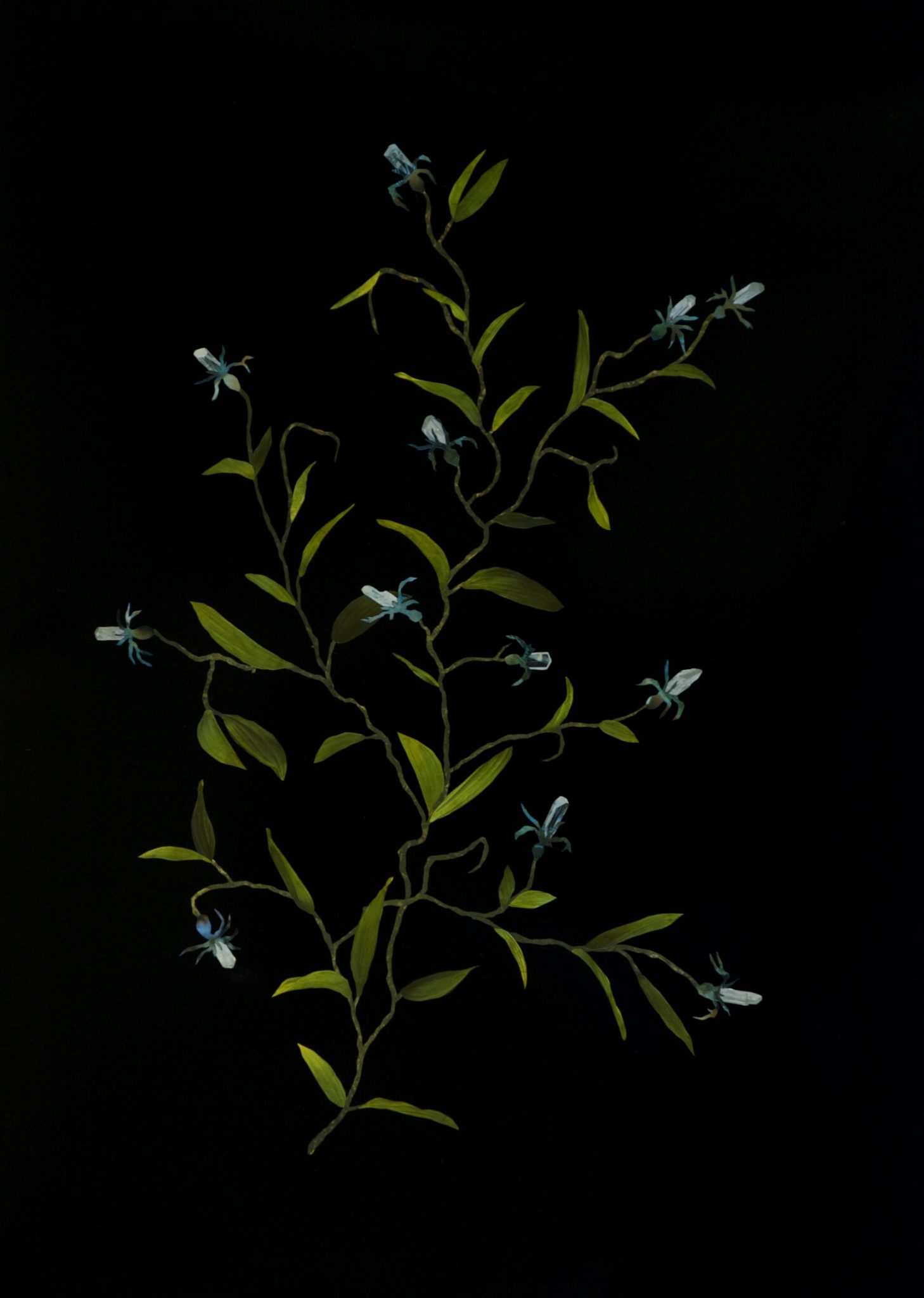In Lady Cane-Bushier Presents…, German- born Volker Eichelmann mischievously becomes the eccentric aristocratic British female hobbyist (or so the pseudonym implies) and seemingly presents us with 11 découpage British wildflowers mounted on gorgeous glossy black paper that shows up the myriad greens, pinks, blues and oranges cut out from gardening magazines and jewellery catalogues.
Though resident in England for nearly two decades, Eichelmann has an outsider’s eye for English quaintness, and often borrows from the vocabulary of the privileged classes, as he did in a series of 2004 text paintings featuring quotations from one Stephen Tennant of Wilsford Manor in Wiltshire, a decadent early-twentieth- century aristocrat. He has also made photographic records of castles, follies and grottoes for his series Untitled (2011).
Collage is what Eichelmann does best. His terrific Proposals for Sculptures and Buildings (2008–10) were genuine feats of architecture, and realistically conceived, even though he never intended for them to be built. Paper and scissor craft is less than practical for urban planning, just as collage is unlikely to be the preferred medium with which a scientist would make plant records. What collage offered Dadaists like Schwitters, and later Pop artists like Richard Hamilton – and even John Stezaker today – is its freeing potential for whimsy, incongruous or surreal collisions, canny references and quotations from wider culture. With his gift for detail and realism, Eichelmann seems to be looking down the century and saying: you may well have thought art got liberated from traditional craft.
Eichelmann’s flowers are specific – all 11 plants have leaves of quite different shades of green; each flower is presented in the perfect composition for which nature strives and to which the experienced flower-arranger puts the finishing touches. Also, just like the eighteenth-century British artist Mary Delany whose ‘paper-mosaics’ of real flowers inspired this series, they don’t overly fetishise prettiness.
Admittedly, Eichelmann lacks the skill that makes Delany’s petals look as though they would shiver in the wind or drop at a breath. This is because, unlike Delany, Eichelmann is not working from nature. Just like the sculptures in his Proposals… series, the plants are fakes, an elaborate invention. The only thing that gives them away is their names, inspired by quintessentially English characters in Ronald Firbank’s novellas, like ‘The Rt Hon. Anise Cherub’.
Eichelmann’s position as the outsider (different gender and culture) puts him in a good, neutral(ish) position to pay homage to one of Britain’s greatest eighteenth-century female artists, whose still lifes still fetch just a fraction of her landscape-painting male contemporaries at auction, and whose art is still aligned by British stereotyping with twee village culture. But why does he dedicate himself simultaneously to the fantastic and to naturalism, to a modernist medium and to the lowly artistic codes of flower arranging? Delany was persuading her audience that paper shapes could be lifelike. Eichelmann goes one step further, using paper to persuade us that the imagined can seem familiar – he can, for example, make a flower in the dense formation of an upside down ice-cream cone look natural. But ultimately I can’t decide: is he showing that concept will always undermine craft, or does he turn that truism on its head?
This article was first published in the May 2013 issue.
